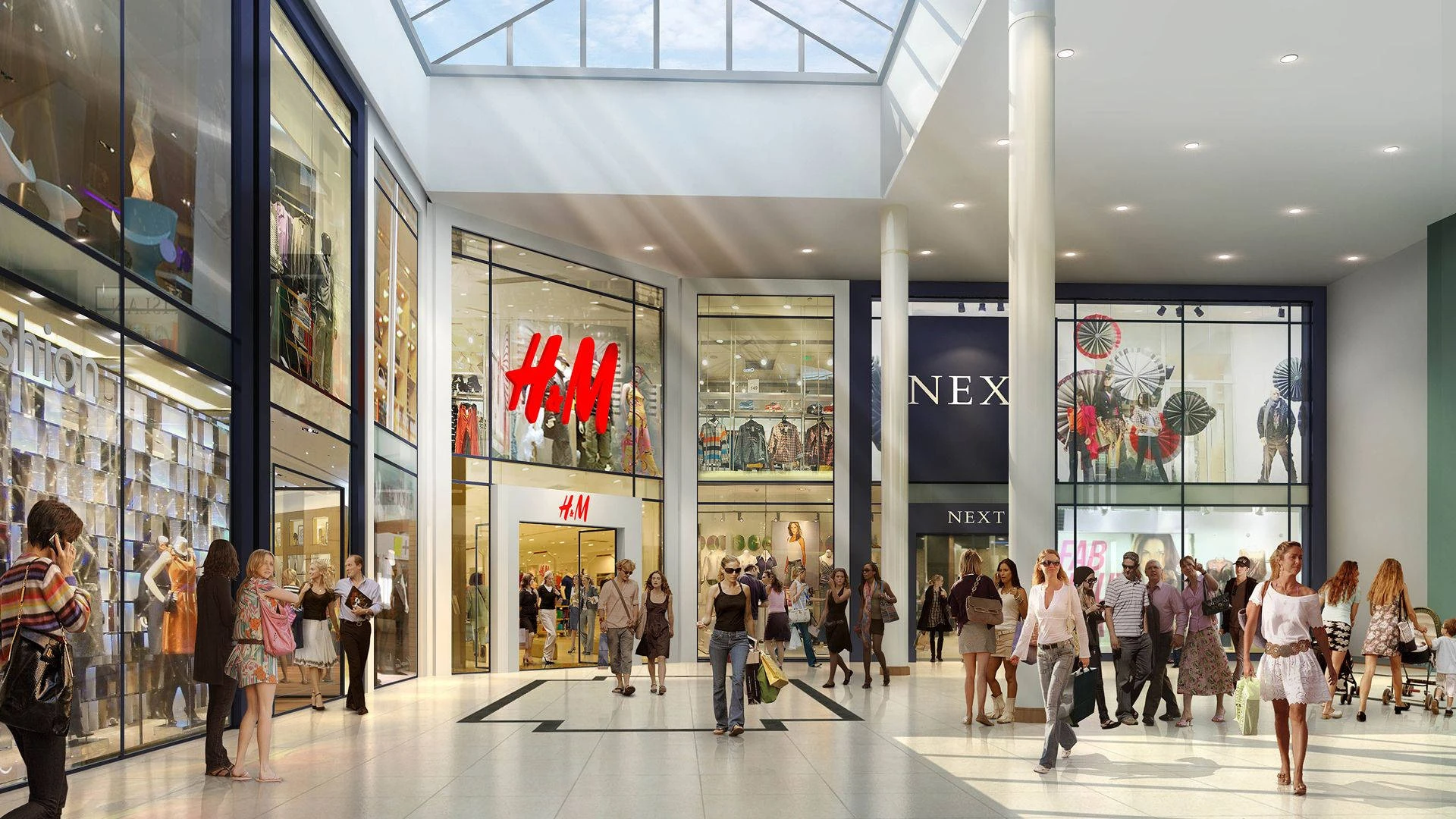Retail Isn’t Dead. It’s Evolving: How Interactivity and Brand Experiences Are Reviving the High Street

For years, headlines have declared the death of retail. E-commerce has exploded, high street stores have shuttered, and shopping malls have battled dwindling footfall. But while traditional retail has struggled, a powerful counter-trend has emerged. Experience is breathing life back into physical spaces.
The future of retail is not about shelves and stock. It’s about interactivity, immersion, and emotional connection. And in this new landscape, brand activations and experiential installations are proving to be the retail revival strategy that actually works.
From Transactional to Experiential
Retail used to be transactional. People went to stores to buy things. But now, with everything available online in a few clicks, the role of the store has shifted. Consumers no longer visit malls because they need to. They go because they want to.
This is where experience becomes critical. According to a recent report by EventTrack, 91% of consumers say they have more positive feelings about brands after participating in events and experiences, and 80% are more likely to purchase as a result.
Interactive displays, live demos, pop-ups, augmented reality (AR), and holographic activations are turning passive shoppers into engaged participants. They don’t just walk past a store. They step inside a story.
Why Shopping Malls Are the New Media Platforms
Shopping malls, once dominated by fast fashion and food courts, are being reimagined as experiential playgrounds. Landlords are beginning to understand that to stay relevant, their real estate must become a destination, not just a location.
Today’s malls are hosting immersive brand takeovers, tech-driven art installations, live product testing labs, and mixed-reality environments that blend entertainment with commerce. These experiences aren’t just eye-catching. They’re strategic media moments.
Footfall is one thing. Dwell time, social sharing, and brand engagement are what truly matter now.
Retail spaces are becoming content engines, where every activation is an opportunity for user-generated content, TikTok virality, and brand buzz. The mall is no longer just a place to shop. It’s a place to discover, explore, and connect.
The Rise of Brand Activations
Leading brands have already embraced this shift.
Nike, for example, now designs flagship stores not as sales channels, but as interactive hubs with basketball courts, customization stations, and app-driven scavenger hunts. Samsung and Apple have turned their retail spaces into experiential galleries, where product immersion takes precedence over sales.
These aren’t stores. They’re brand theatres.
The numbers back it up. A study by Freeman found that experiential marketing delivers a higher ROI than digital advertising for 65% of brands, and brands that focus on experience outperform those that don’t by 85% in sales growth.
When customers can interact, test, play, and participate, they form emotional connections. The kind that lead to loyalty, not just impulse buys.
Technology as the Experience Enabler
This movement is powered by technology.
Interactive touchscreens, holographic displays, AR mirrors, and smart environments are creating dynamic in-store moments that can’t be replicated online. AI-powered assistants and real-time personalization add another layer, offering shoppers tailored journeys based on behavior and preference.
It’s not just about the wow factor. It’s about making physical retail intelligent and adaptive.
When done right, the store becomes an extension of the brand’s digital ecosystem, offering data-rich engagement, measurable performance, and real-world feedback loops that benefit both brand and consumer.
The Future Is Hybrid and Human
What’s clear is this. People still crave real-world experiences. But they want them to feel meaningful, modern, and memorable.
Interactivity gives retail its edge. Experiences give people a reason to visit. And brand activations make malls matter again.
As the line between physical and digital continues to blur, the retailers and landlords who succeed will be those who think like media companies, act like storytellers, and treat every square foot as a stage.
Retail isn’t dead. It’s being redefined.
And the brands that embrace interactivity and experience are the ones writing its next chapter.
From Chatbots to Digital Humans
AI avatars combine advanced natural language processing, computer vision, and generative AI to create intelligent characters capable of real-time conversation. Unlike traditional bots, avatars don’t just respond with words, they can express emotion, use gestures, and maintain presence.
This shift is significant. Human communication is more than speech. Tone, body language, and subtle cues play a huge role in trust and engagement. AI avatars replicate these elements, creating experiences that feel less like using a tool and more like interacting with another person.
Where AI Avatar Agents Are Transforming Experiences
- Customer Service: AI avatar agents can replace static help desks with interactive assistants that greet customers, answer questions, and resolve issues 24/7. Their ability to recognize emotion and adapt responses creates more satisfying interactions.
- Healthcare: Patients can consult with AI avatar nurses or specialists who guide them through procedures, explain diagnoses, or offer wellness advice. When delivered as a hologram, these avatars provide presence and reassurance that goes beyond a voice on a phone.
- Education: Instead of reading from textbooks, learners can interact with AI avatar teachers who adapt lessons in real time. In museums or cultural institutions, avatars can act as guides, bringing exhibits to life and answering questions on demand.
- Retail & Advertising: AI avatars can become the face of a brand, delivering personalized recommendations, telling product stories, and even acting as brand ambassadors in holographic advertising displays.
The Benefits of AI Avatar Agents
- Scalability: One avatar can interact with millions of people simultaneously, ensuring consistent service.
- Personalization: AI avatars learn from data, tailoring responses to each individual.
- Presence: When paired with holographic display technology, avatars don’t just talk to you, they stand in front of you, life-sized and engaging.
- Cost Efficiency: Reduces the need for physical staff in certain roles while maintaining high-quality interaction.
- Accessibility: Avatars can speak multiple languages, adapt to cultural contexts, and support people with disabilities through real-time translation or visual guidance.
AI Avatars as the Next Interface
We are entering a post-screen era where interacting with information will feel less like using a device and more like having a conversation. Instead of navigating menus or scrolling through content, people will simply ask an AI avatar, and get a natural, human-like response.
When combined with holograms, AI avatars become not just functional but immersive digital beings that occupy physical space. This fusion has the power to change how we access healthcare, education, entertainment, and commerce.
Looking Ahead
AI avatars and AI avatar agents are not a novelty. They represent the future of human-machine interaction. As these avatars become more realistic, more intelligent, and more widely deployed, they will redefine expectations for customer service, education, and brand engagement.
Flat interfaces are giving way to conversations. Chatbots are evolving into companions. And in the very near future, your next teacher, doctor, or shopping assistant may not be human at all, it may be an AI avatar, standing right in front of you, guiding you through the world.
Goodbye Flat. Hello Depth.
Unlike traditional screens, holographic displays don’t just show content, they project it into space. Depth, perspective, and realism transform an ad or product demo into something that feels alive, present, and impossible to ignore.
Think about it: in a crowded shopping mall or busy airport, a hologram isn’t just another rectangle on a wall. It’s a three-dimensional presence that stops people mid-stride. It’s not about pixels anymore; it’s about presence.
The Attention Advantage
In the attention economy, capturing even a few seconds of focus is gold. Research shows that holographic displays can triple audience engagement compared to 2D screens. That’s because the brain processes 3D visuals differently; they’re harder to tune out and far more memorable.
For advertisers and retailers, that means more dwell time, stronger recall, and ultimately, a higher return on investment. In other words, holograms don’t just look futuristic, they work.
Why Retail Media and OOH Are Turning to Holograms
Retail media networks and out-of-home (OOH) advertising are under pressure to deliver impact without oversaturating audiences. Static signage is fading into the background, while even digital billboards risk blending into the noise.
- In malls, they transform window shopping into an immersive experience.
- In airports, they offer travelers an unexpected, premium brand moment.
- In corporate spaces, they signal innovation before a single word is spoken.
It’s advertising that feels less like an interruption and more like an encounter.
Miirage and the Next Wave of Display Innovation
At Miirage, we see holograms not as a novelty, but as the natural next stage in display evolution. Our technology is designed for high-footfall environments, combining ease of installation with jaw-dropping impact. No headsets, no apps, no QR codes—just instant immersion.
And because our displays are built for scale, brands and OOH partners can roll out holographic campaigns quickly, without the usual risks that come with untested media formats.
The Screen Era Is Ending. The Hologram Era Is Here.
The display industry has always evolved in leaps, from radio to TV, from desktop to mobile, from static to interactive. Holograms are the next leap. They’re not a gimmick; they’re the new standard for grabbing attention in a world where attention is everything.
The only question left is: who will embrace it first?
Further Reading
- Reimagining Retail: Where Online Meets the High Street (Retail Touchpoints)
- Experiential Retail Trends: How Immersive Store Experiences Are Redefining Store Shopping (InfoVision)
- Fighting Back: How Technology Can Help Revitalise the High Street (Business Reporter)
- The Future of Physical Retail: 5 Actions to Elevate Customer Experience (MIT Sloan)
- Retailtainment: Blending Shopping and Entertainment (Wikipedia)
